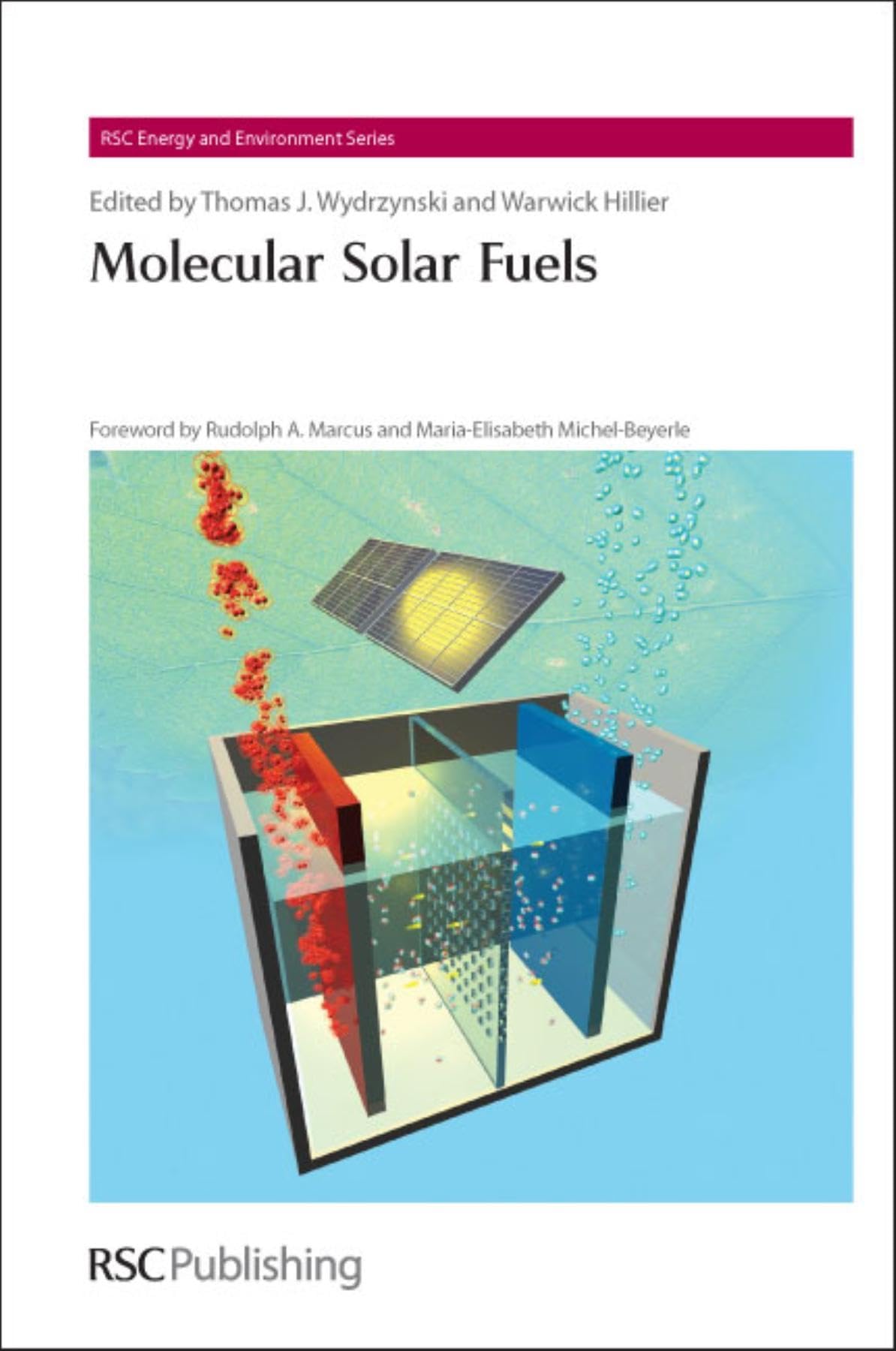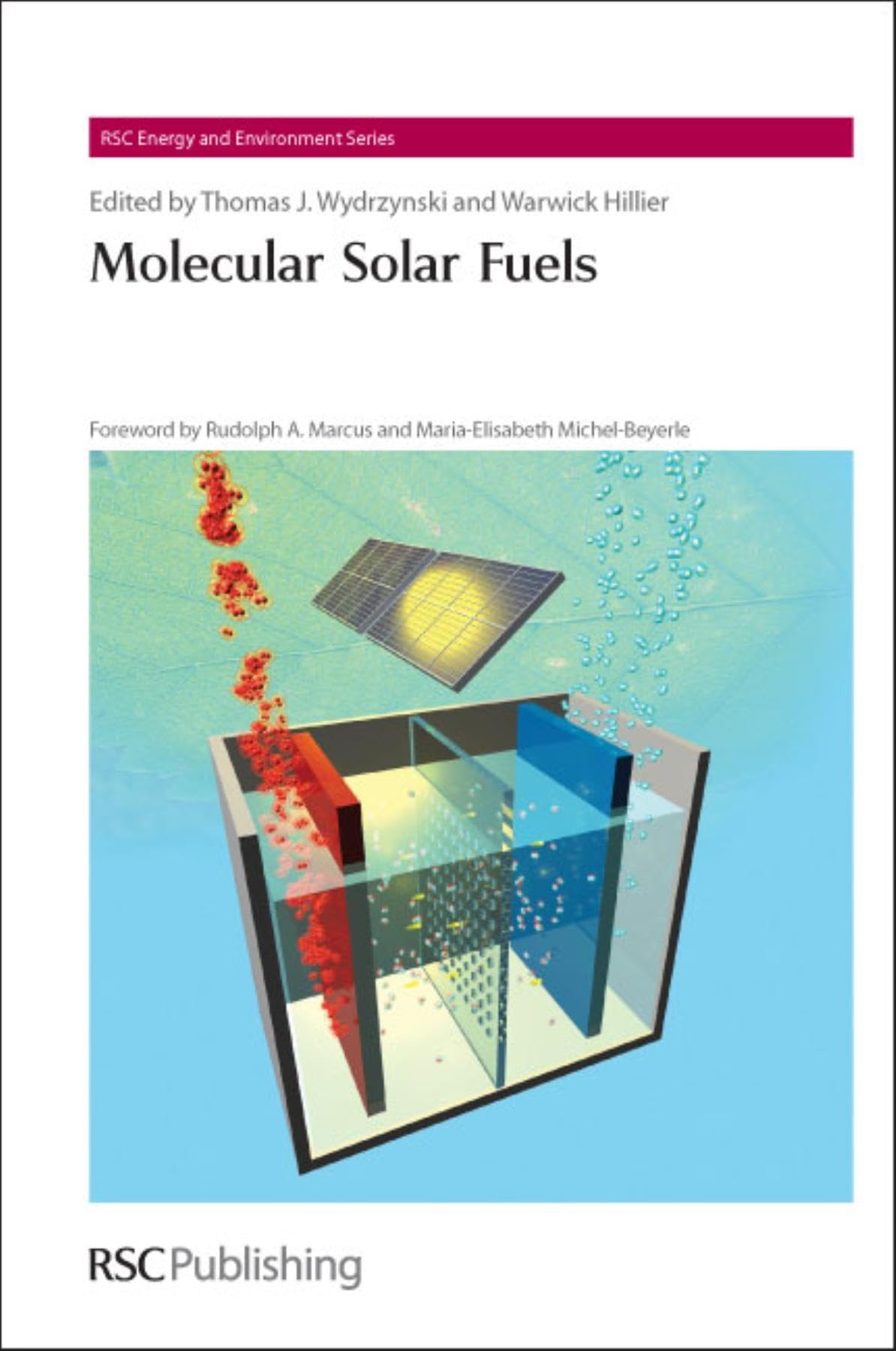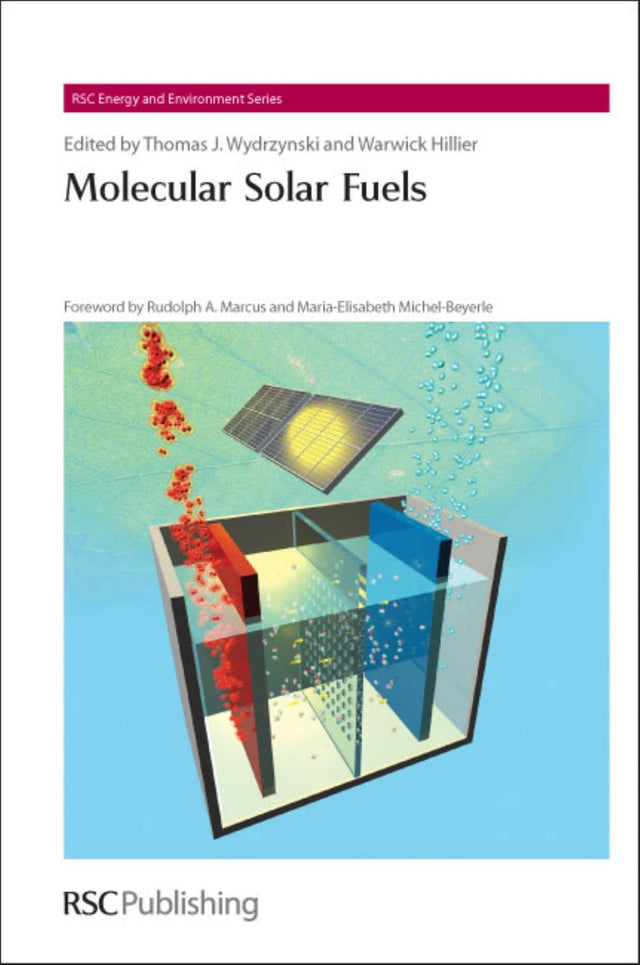Molecular Solar Fuels: Volume 5 (Energy and Environment Series)
Molecular Solar Fuels: Volume 5 (Energy and Environment Series) is backordered and will ship as soon as it is back in stock.
Couldn't load pickup availability
Genuine Products Guarantee
Genuine Products Guarantee
We guarantee 100% genuine products, and if proven otherwise, we will compensate you with 10 times the product's cost.
Delivery and Shipping
Delivery and Shipping
Products are generally ready for dispatch within 1 day and typically reach you in 3 to 5 days.
Author: Ed. Thomas J. Wydrzynski & Others
Brand: Royal Society of Chemistry
Binding: hardcover
Number Of Pages: 576
Release Date: 01-06-2011
model number: Colour figures are allowed in this book.
Part Number: Colour figures are allowed in this book.
Details: Product Description
World demand for energy is rapidly increasing and is projected to more than double by the year 2050. Finding sufficient supplies of clean energy for the future is one of the major scientific challenges of today. Sunlight accounts for the largest energy input into the earth's surface, providing more energy in one hour than all of the energy consumed by the entire planet in one year. Over more than 2 billion years, plants, algae and cyanobacteria have evolved the most efficient methods to utilize solar energy, by catalyzing the light-driven splitting of water into molecular oxygen, protons and electrons. If the released protons are captured and reduced to molecular hydrogen by a suitable hyrodrogenase enzyme, then a perfect fuel cycle can be achieved, since the combustion of hydrogen with oxygen produces only water. In the search for clean, energy-rich fuel sources, we can take advantage of the natural photosynthetic and hydrogenase systems by applying and adapting the energy conserving principles that Nature has evolved in these systems and use them to guide the development of synthetic photo- and reductive catalysts for solar energy utilization. The US Department of Energy Basic Sciences Workshops in 2005 on 'Solar Energy Utilization' and in 2007 on 'Catalysis for Energy' identified the development of solar fuels as a key, carbon-neutral, energy resource for the future and hydrogen is one such promising example. The energy released from the combustion of hydrogen with oxygen can be coupled to electrical current generation or the reduction of carbon compounds such as carbon dioxide. If hydrogen could be readily produced from water using solar energy, then an ideal fuel cycle would be possible.
From the Back Cover
The US Department of Energy Basic Sciences Workshops in 2005 on 'Solar Energy Utilization' and in 2007 on 'Catalysis for Energy' identified the development of solar fuels as a key, carbon-neutral, energy resource for the future. Hydrogen is a promising example as the harmless waste product, on combustion with oxygen, is water. The energy released can be coupled to electrical current generation or the reduction of carbon compounds such as carbon dioxide. If hydrogen could be readily produced from water using solar energy, then an ideal fuel cycle would be possible. The main aim of the book is to present the latest knowledge and chemical prospects in developing hydrogen as a solar fuel. Using oxygenic photosynthesis and hydrogenase enzymes for bio-inspiration, this book presents the strategies for developing photocatalysts to produce a molecular solar fuel. Topics covered include the molecular mechanisms for the capture of light, photochemical conversion to chemical potential, and the storage of energy in chemical bonds, both in the natural systems and the synthetic chemical systems. The book is written by experts from various fields working on the biological and synthetic chemical side of molecular solar fuels to facilitate advancement in this area of research.
About the Author
Tom Wydrzynski is a Professor and Head of the Photobioenergetics Group at the ANU (Australian National University) School of Biology where he conducts research on natural and artificial photosynthesis. He is on the Editorial Boards of Photosynthesis Research and Biochimica et Biophysica Acta - Bioenergetics. Professor Wydrzynski received his BA in Biology from the University of Missouri at St. Louis and a PhD in Plant Biology from the University of Illinois at Urbana-Champaign. He subsequently held research posts at the Max Volmer Institute for Biophysical and Physical Chemistry in Berlin, the Standard Oil Company of Indiana (AMOCO Corporation) in Illinois, and the Lawrence Berkeley Laboratory in California. Associate Professor Hillier has authored over forty journal articles, book chapters and conference proceedings. He has also presented his work at a variety of international conferences. Warw
EAN: 9781849730341
Package Dimensions: 9.3 x 6.3 x 1.3 inches
Languages: English





